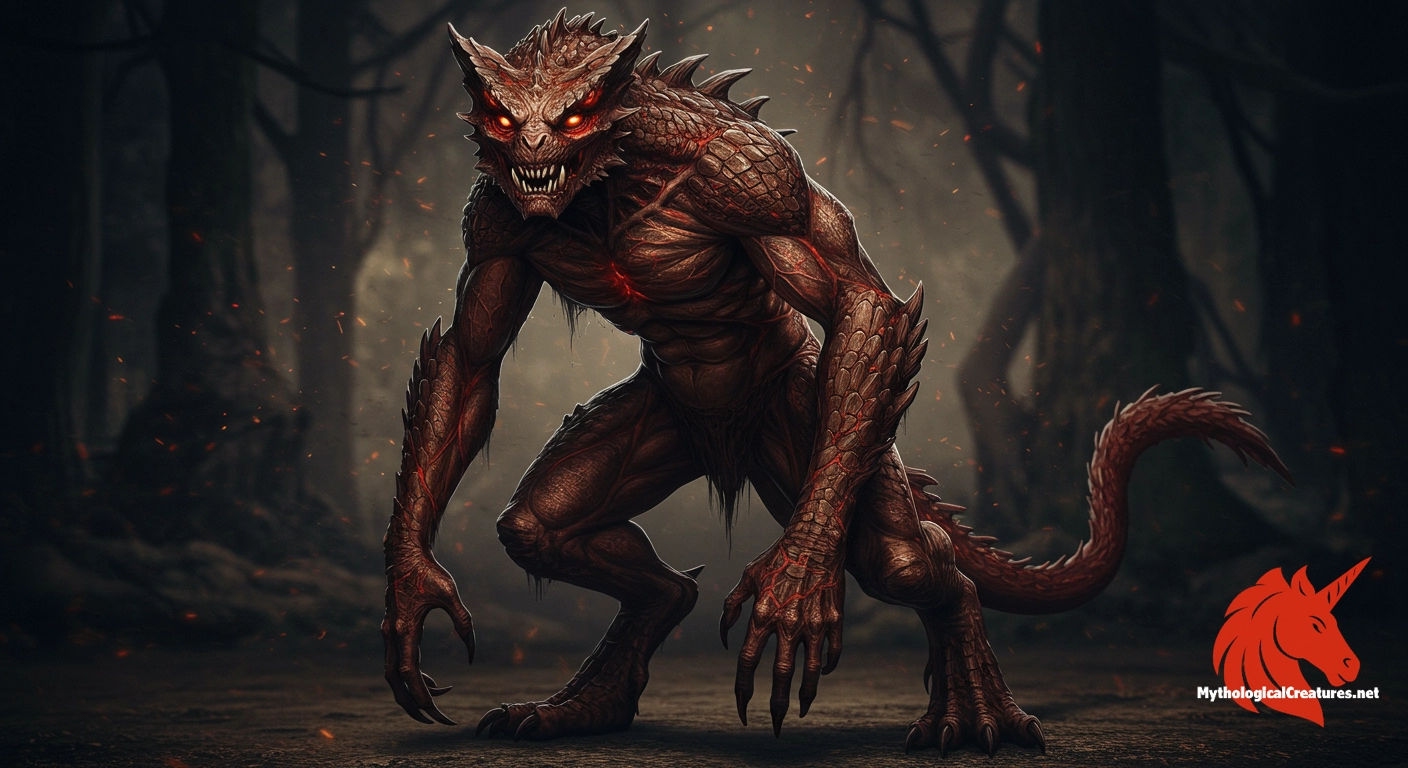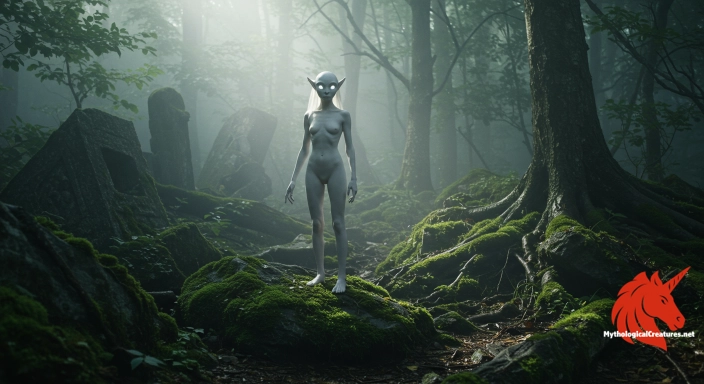Aamon: Aamon is a Grand Marquis of Hell and a prominent demon in the Ars Goetia, renowned as the demon of life and reproduction.

Aamon
Aamon - Aamon is notable for his unique dominion over life and reproduction, setting him apart from other demonic forces and underlining the complex nature of infernal power in Western esoteric traditions.
Origins & First Encounters
Aamon, also known by the names Amon and Nahum, emerges as a compelling figure within demonological lore, renowned for his dual role as both a harbinger of chaos and the embodiment of generative power. His earliest attestations are found in grimoires of medieval and Renaissance origin, where he is designated as a Grand Marquis of Hell. Throughout the unfolding narratives of the occult tradition, the demon is noted for his command over 40 infernal legions, an endorsement of his imposing position in the demonic hierarchy. Intriguingly, his association with life and reproduction sets him apart from many contemporaneous demonic figures, suggesting a complexity that transcends simple malevolence. The origins of his name point toward an intermingling of ancient Semitic mythologies with later European occult practices, culminating in a rich tapestry of legend. His lore not only reflects the fears associated with the unknown but also the paradoxical desire to understand and harness the very forces of creation. Moreover, the character of Aamon invites those exploring the esoteric to contemplate the blurred boundaries between destruction and renewal. His legacy, steeped in both dread and fascination, continues to stir the imagination of occult enthusiasts and mythologists alike. This multifaceted persona remains a vivid symbol of the enduring allure of the mysterious forces that govern life and the afterlife.
Source Texts & Tale Variants
Ancient grimoires such as the Lesser Key of Solomon and the Pseudomonarchia Daemonum have long served as primary conduits for the narrative of Aamon, cementing his reputation within the realm of ceremonial magic. Texts from the early modern period attribute to him the command of a vast host of demonic entities, an element that has captivated the attention of those studying the dynamics of power in infernal hierarchies. Variants of his story can be found in a range of occult manuscripts, each providing subtle differences in his portrayal while maintaining his central role as a life-giver. Several manuscripts characterise him as a mediator of disputes among demons, which adds a social and organisational dimension to his otherwise fearsome image. Some narratives place him squarely in the milieu of Renaissance occult studies, where scholars sought to decode the symbolic language of the infernal world. Alternative accounts, though fewer in number, have recast his attributes to explore the synergy between creative energy and demonic influence. Even within these variations, the consensus remains on his powerful emblematic functions, largely focused on his control over numerous legions. The multiplicity of story variants underscores the dynamic evolution of his mythos over centuries, highlighting the adaptability of demonic lore to different cultural and intellectual currents.
Form & Powers
Descriptions of Aamon’s form are remarkably diverse, reflecting the inherent fluidity of his mythological identity. In several accounts, he is portrayed as a tall, commanding figure whose human likeness is interwoven with unsettling, beast-like traits. His eyes are often depicted as smouldering or luminous, hinting at an inner fire that symbolises both his creative vitality and his infernal wrath. Some visual interpretations lend him an appearance that is reminiscent of a warrior, complete with mythic accoutrements such as horns or antlers, which serve as emblems of his formidable status. In other renderings, Aamon assumes the guise of a shapeshifter, capable of morphing into animal forms like that of a wolf or serpent, thereby reinforcing his connection to primal, uncontrollable forces. His visage, whether more human or more bestial, is invariably marked by an aura of regal menace that speaks to his command over 40 demonic legions. The interplay of light and shadow in his depictions not only accentuates his paradoxical nature but also symbolises the merging of life-giving and destructive energies. His physical form, as recorded by diverse sources, leaves little room for a single canonical descriptor, which in turn enhances the mystique that surrounds him.
Regional Faces
Regional interpretations of Aamon’s character offer a fascinating glimpse into how diverse cultures have adopted and adapted his myth. In the broader context of European demonology, especially within areas influenced by medieval and Renaissance thought, his image is often intertwined with broader themes of fertility and regeneration as well as infernal authority. Some Iberian and Italian occult sources imbue him with local nuances, merging classical ideas with regional traditions that revere both life and the darker forces of transformation. In parts of France and Germany, his narrative has occasionally been aligned with indigenous beliefs in the supernatural, giving him attributes that resonate with local pastoral myths and the cycles of nature. Eastern occult traditions have similarly reframed his role, sometimes correlating him with ancient divinities linked to reproduction and the natural order, thereby broadening his symbolic range. This regional adaptation is further enriched by the historical cross-pollination between Christian demonology and earlier pagan ideas, where Aamon’s dualistic qualities became a canvas for exploring local metaphysical preoccupations. Such variations provide insight into how different societies integrate external influences into a coherent mythological schema. The regional diversity in his portrayals underscores the dynamic interplay between imported occult traditions and established cultural beliefs, ultimately enhancing the richness of his legend.
Cultural Parallels
Aamon’s complex character invites comparisons with a range of mythological entities and demonic figures from other cultures, underlining the universality of his themes. His dual role as a symbol of both sterility and virility mirrors the contradictions found in deities like the ancient fertility gods, whose narratives similarly navigate the interstices between creation and destruction. In some respects, he shares similarities with figures such as Asmodeus, where both are depicted as harbouring intricate power dynamics within infernal hierarchies. These parallels are not confined to Western traditions alone; echoes of his attributes can also be discerned in certain Middle Eastern occult figures, where life-affirming powers are interwoven with the darker aspects of existence. Comparative analysis reveals that many cultures have opted to personify the inexorable ties between life and death through composite beings that challenge simple categorisations. His portrayal resonates with the ambiguous nature of transformative forces seen in other mythological narratives, thus opening a dialogue about the universality of cyclic existence. The synthesis of fear and fascination in his depiction is reminiscent of other enigmatic symbols found across global mythologies. In doing so, Aamon stands as a testament to the enduring human impulse to reconcile opposing forces through rich, symbolic narratives.
Legacy & Modern Evolution
The evolution of Aamon’s depiction over time reflects shifting cultural sensibilities and the enduring allure of the arcane. Initially emerging from the shadowy pages of medieval grimoires, his character has transformed into a multifaceted emblem that resonates with modern occult and pop culture aesthetics. As the Renaissance rekindled interest in the esoteric, his mythos was embellished by scholars and practitioners who explored his role as both a creative and destructive force. In the centuries that followed, literary and artistic portrayals reimagined him in myriad forms, ranging from a fearsome overseer of infernal legions to a symbol of hidden transformative energies. Contemporary occult practices and digital media have embraced his enigmatic persona, often presenting him as a figure of subversive creativity and profound mystery. This modern reinterpretation tends to highlight his dualistic nature, aligning him with themes of regeneration, transformation, and the inherent unpredictability of life. His legacy continues to inspire not only those engaged in the occult but also a broader audience captivated by the interplay of mythology, spirituality, and cultural critique. Today, Aamon is frequently depicted in graphic novels, films, and art exhibits, each recontextualising his age-old symbolism within new narrative frameworks. His continued presence in modern cultural discourse serves as a reminder of the complex and enduring power of myth to evolve alongside societal change.
Interesting Fact
Aamon's dual association with both life and reproduction, despite his demonic nature, offers a fascinating glimpse into the multifaceted roles demons can play in esoteric traditions.
Quick Creature Info
Associations:
Our Mythic Legendary Rating:

Also Sometimes Known As:
Habitat:
Supernatural Powers:
Physical Attributes:
Abilities:
Behavior:
Lore:
References
Discover Another Mythical Legend You May Not Have Heard Of?
Uncover the mysteries of ancient folklore and expand your knowledge of legendary beings from cultures around the world.
Dare to Meet the Muu shuvuu....
Mythical Disclaimer: The images and data on this site are derived from various historical and literary sources, but we have found that many myths often have multiple versions and interpretations across references, sometimes contradictory. As a result, these creature depictions are artistic interpretations—imaginative blends of folklore, legend, and a dash of AI guesswork. Because creature descriptions vary widely, our illustrations and accompanying information represent our best effort to honor mythology while bridging creative gaps. Enjoy these interpretations—just remember, we've done our best to respect the stories and validate available data, but in the realm of mythology, details often shift, imagination leads the way, and nothing is ever set in stone!
Curated by the Mythological Creatures Team (rev. May 2025)
